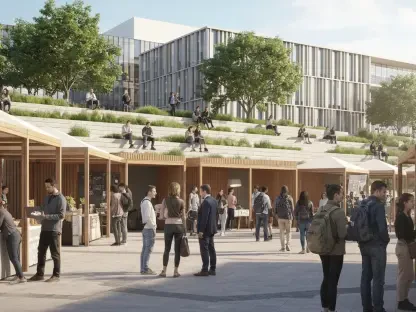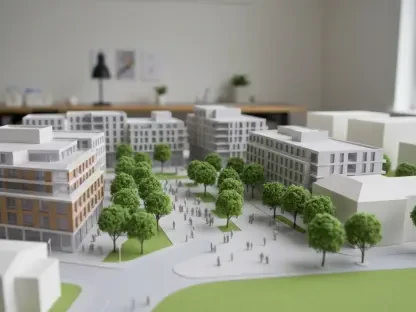In New York City, the housing crisis has reached a breaking point, with skyrocketing rents and home prices pushing many residents out of the neighborhoods they once called home, creating an urgent need for action. Amid this dire situation, Zohran Mamdani, a prominent figure in the mayoral race, has placed housing affordability and transit at the heart of his campaign, promising transformative change. While much attention has been given to his pledge to freeze rents for rent-stabilized apartments built before 1974, which account for roughly half of the city’s rental stock, there’s a broader vision at play. This discussion shifts focus to an ambitious strategy aimed at reducing costs for non-stabilized rentals and making homeownership more accessible. Embracing YIMBY (Yes In My Backyard) principles, Mamdani has supported key pro-housing initiatives like the City of Yes upzoning and the repeal of outdated parking mandates. This article outlines a comprehensive five-step approach that could define a pro-housing administration under his leadership, offering a path toward a more affordable, sustainable, and equitable urban future for all New Yorkers.
1. Tackle Zoning Restrictions
New York City’s zoning laws have long constrained its capacity to house a growing population, with the 1961 downzoning slashing the city’s zoned capacity from an estimated 55 million to just 11 million residents. Subsequent neighborhood-specific downzonings have only tightened these restrictions, leaving nearly 40% of Manhattan’s existing buildings impossible to construct under current rules. While the City of Yes initiative marks progress by allowing 3-5 story developments near transit stops, this remains a modest step compared to bolder moves in cities like Vancouver, which permits up to 20 stories in similar areas. Reversing these zoning barriers is critical to increasing housing supply, and a focused effort on transit-oriented development could yield dual benefits of sustainability and affordability. By prioritizing areas near transit hubs, the city can reduce reliance on cars, cut carbon emissions, and lower living costs for residents who can forgo vehicle ownership.
A strategic focus on upzoning Manhattan, the transit and business core of the city, presents a significant opportunity to expand housing stock. The recent Midtown South Mixed Use Rezoning, which created space for 10,000 new homes across just 40 blocks, serves as a model that could be scaled across the borough for even greater impact. Additionally, the repeal of a state law capping density through floor area ratio (FAR) opens new doors for high-density projects in job-rich, transit-accessible areas. Beyond Manhattan, the under-development Interborough Express (IBX) corridor offers potential for a comprehensive rezoning plan that could generate up to 100,000 new homes over the next decade, according to NYU researchers. Collaboration with state leaders, particularly Governor Hochul, who prioritizes the IBX, could ensure this project aligns housing growth with transportation infrastructure, setting a precedent for integrated urban planning.
2. Remove Non-Zoning Obstacles to Housing
Beyond zoning, a host of non-zoning regulations inflate construction costs and stifle housing development in New York City, creating unnecessary barriers to affordability. Take elevator regulations, for instance, which far exceed international standards seen in Western Europe, resulting in staggering expenses—a four-stop elevator in NYC costs over four times more than in Switzerland. Similarly, tower crane rules, tightened after a single incident, have pushed developers toward less safe and costlier mobile cranes, undermining both safety and efficiency. Addressing these outdated rules by aligning with global best practices could significantly reduce hard costs, making it feasible to build more units without compromising on quality or safety. Streamlining such regulations would directly support the goal of increasing housing supply across diverse neighborhoods.
Further reforms are needed in areas like single-stair building codes, where the city currently limits structures to six stories, far below allowances in countries like France (16 stories) or Italy (25 stories). Expanding height limits and floor area per level for single-stair designs could enhance floorplan efficiency and cut development costs. Additionally, minimizing reliance on expensive and hazardous sidewalk sheds, which deviate from international norms, would further ease construction burdens. Another critical issue lies in the approval process, where the City Council’s informal “member deference” practice allows individual council members to block projects, fostering uncertainty. Supporting ballot measures to establish an Appeals Board with a city-wide perspective could override such localized opposition, ensuring that housing projects move forward to address the broader shortage.
3. Maximize Public Sector Resources
Relying solely on the private sector to solve the housing affordability crisis is insufficient, especially given high interest rates that deter development. Innovative public sector financing, as demonstrated in Montgomery County, Maryland, offers a viable alternative where local government acts as both banker and developer to create mixed-income housing. Unlike traditional models dependent on complex tax credits or inclusionary zoning, which can sometimes hinder overall construction, this approach builds state capacity and reduces reliance on volatile private investment. By directly funding and overseeing projects, the public sector can ensure that affordability remains a core focus, particularly in a market where economic conditions pose challenges to developers. This strategy could be a game-changer for delivering housing at scale in New York City.
Equally important is leveraging the vast tracts of city-owned land, including 1,800 acres currently classified as having no use—twice the size of Central Park. Developing dense housing on these parcels offers a cost-effective solution compared to acquiring new land. Beyond unused lots, reimagining underutilized public sites, such as aging libraries, by integrating ground-floor public amenities with residential towers above has proven successful in areas like Sunset Park and Inwood. Scaling this model to other city and state-owned properties, including MTA holdings like a former bus washing facility in Greenpoint slated for over 1,000 homes, could unlock significant potential. Countering NIMBY opposition through a comprehensive, all-encompassing approach to zoning and approvals will be essential to prevent delays and ensure these projects come to fruition.
4. Appoint the Right Leadership
Effective governance in addressing the housing crisis hinges on assembling a team of experienced, pro-housing leaders who can execute ambitious policies. Historically, mayoral administrations have retained talented civil servants across ideological divides, as seen with De Blasio appointing Bloomberg-era officials. Retaining individuals like Dan Garodnick, the current Director of City Planning, who has adeptly led pro-housing initiatives, would provide continuity and expertise. Elevating Garodnick to a higher role, such as Deputy Mayor, could further amplify his impact. Similarly, reappointing Maria Torres-Springer, a respected former Deputy Mayor for Housing under Adams who later resigned over governance concerns, could bring proven leadership back into the fold, potentially as First Deputy Mayor. Such appointments signal a commitment to competence over politics.
Conversely, decisive action must be taken to remove obstacles within the current administration, notably by dismissing Randy Mastro, Adams’ First Deputy Mayor, whose track record includes halting critical bus lanes and housing projects. His immediate replacement on day one would send a clear message that anti-housing stances have no place in a progressive administration. Additionally, forging alliances with pro-housing figures like Democratic Comptroller nominee Mark Levine could strengthen the push for innovative housing solutions. Building a coalition of aligned leaders across various offices ensures that policy implementation is not derailed by internal dissent or competing priorities, paving the way for cohesive and impactful reforms in the housing sector.
5. Promote the Vision for Support
Driving widespread support for pro-housing policies requires crafting a compelling narrative that resonates with diverse stakeholders across New York City. Framing YIMBY initiatives as progressive imperatives can highlight their environmental benefits, such as enabling low-carbon lifestyles through dense, transit-friendly housing that reduces car dependency. Additionally, the labor angle presents a strong case—streamlining housing construction creates union jobs, a point underscored by the Carpenters’ Union in California becoming a key advocate for similar reforms. Economically, increasing the housing stock boosts the tax base through new jobs and property taxes, providing revenue to fund other municipal priorities within tight fiscal constraints. This multifaceted argument can unite environmentalists, workers, and fiscal advocates under a common banner.
Building a durable coalition also involves aligning with progressive city councilors like Chi Osse and Tiffany Caban, who are already championing housing expansion, to position this agenda as a cornerstone of equitable urban policy. Regionally, collaboration with nearby cities like Jersey City and New Rochelle, which are stepping up housing production, is vital, as is advocating for state-level legislation akin to California’s SB79 to legalize mid-rise apartments near transit hubs. Pushing for such reforms in Albany, Trenton, and Hartford can address the metropolitan area’s housing needs holistically. Ultimately, combating the scarcity mindset exacerbated by the crisis and exploited by divisive rhetoric means ensuring there’s enough housing for everyone, preserving the city’s legacy as a refuge for marginalized communities seeking opportunity and safety.
Final Reflections: Building a Housing Legacy
Looking back, the embrace of YIMBY policies by Zohran Mamdani marked a pivotal shift in addressing New York City’s housing challenges. The implementation of a five-step strategy focused on zoning reform, regulatory streamlining, public sector innovation, strategic appointments, and coalition-building demonstrated a commitment to lowering rents and home-buying costs. These efforts not only tackled immediate affordability issues but also reinforced the city’s identity as a vibrant, inclusive hub for all. Moving forward, the emphasis should remain on sustaining momentum through regional partnerships and state-level advocacy to ensure housing abundance. Additionally, continuous engagement with communities to counter opposition and highlight tangible benefits will be crucial. This blueprint laid the groundwork for a lasting legacy, proving that bold, progressive action could transform urban landscapes for generations to come.









